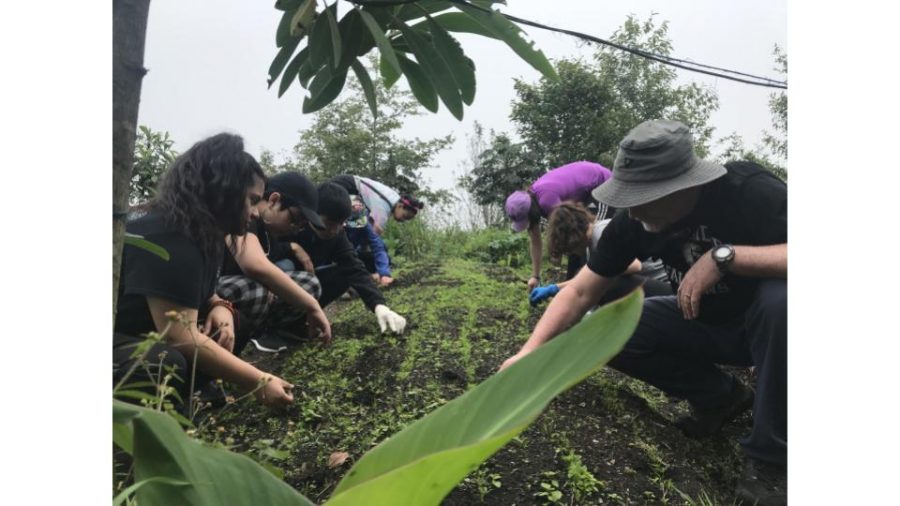Ecuadorian Agriculture
Pictured: CRLS students working on a farm in Yunguilla, Ecuador.
May 30, 2018
When asked to create a project for our Food, Farming, and Our Planet class promoting sustainable agriculture in a local community soon after returning from a school trip to Ecuador, a lightbulb went off in both of our minds. Why not bring home practices implemented in Ecuador, where agriculture is the top contributor to the nation’s economy?
The trip led us and 30 other students to the community of Yunguilla, in the highlands of Ecuador, where we explored the Bosque Nublado-—or, Cloud Forest—and visited a community built on subsistence farming, community trust and teamwork, and appreciation for the miles of neighboring mountains and vegetation.
Our group worked in the garden, dairy house, jam factory, and handicraft workshop. Unlike a majority of U.S. farms, the farm is managed by one woman, who plants, grows, and harvests crops used in the local restaurant and store. Like the garden, the dairy farm—comprised of only three rooms—differs greatly from the industrial factory farms common in the U.S. in its size and production.
Residents of Yunguilla are all designated a maximum of eight cows. This system functions off the value of sharing common resources and understanding the effects of exploiting essential goods from which the entire community benefits.
While traveling in a large tour bus throughout both urban and rural parts of Ecuador, we observed how sustainability played a part in the country’s infrastructure, agriculture, and energy. The landscape and vegetation of Ecuador surprised us as the tropical foliage, the blankets of densely populated neighborhoods on the capital’s mountainsides, and the highlands were nothing like Cambridge.
Along highways, we noticed mountainsides covered in cement-like material spotted with drainage pipes. Our tour guide later told us that in order to prevent landslides, Ecuador uses biodegradable material on the mountainsides, planting trees in it as well.
Additionally, we learned that most citizens use lower-cost, subsidized gas to cook at home. Despite favoring gas for their cooking, Ecuadorians source 80% of their electricity from hydropower, compared to the United States, which only powers 7% of its electricity with hydropower and the majority with environmentally destructive fossil fuels. Although Cambridge’s landscape can’t match the breathtaking cloud forests of Ecuador, the fundamental values that the citizens of Yunguilla and small scale farmers hold can be adopted in our city.
In thinking tangibly, there are several different urban developments that integrate sustainable agricultural practices. Several cities, including Cambridge, have created community gardens, where individuals can plant new foods and distribute the harvested vegetables among neighbors. In areas where it is difficult to buy fresh produce for a reasonable price, this model is extremely effective. In addition to community gardens, visiting farmers’ markets and stores that produce local goods promotes localization. The globalization of goods leaves a massive ecological footprint that is difficult to decrease unless we can restructure where we demand our foods to come from. While it is ideal to buy local and organic foods, doing so is also expensive. Therefore, targeting the subsidies that continue allowing unsustainable, industrial agriculture farms to produce unhealthy products is another step in the right direction.
Despite differences in region and culture, communities throughout the U.S. can adopt the Ecuadorian mentality, if nothing else. Americans have the ability to lead a sustainable lifestyle if they change their mindset to mirror the community-based mentality of the people from Yunguilla.
This piece also appears in our May print edition.










